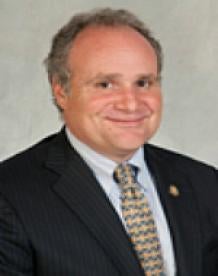New York State has not exactly been a haven for the natural gas industry these past few years, serving as the epicenter of the anti-fracking movement. It is also one of the few states that does not permit Liquefied Natural Gas (LNG) fueling stations, due to the application of an out-of-date 1970s statute. That may soon change, however, as the New York State Department of Environmental Conservation (DEC) recently issued proposed regulations that would finally authorize the siting and construction of LNG fueling stations. See 6 NYCRR Part 570 (proposed). The proposed regulations tout the environmental benefits of LNG as an alternative to diesel as fuel in heavy-duty trucks. DEC is also responding to new interest expressed by the long-haul trucking industry in employing LNG engines as an alternative to diesel engines. While LNG engines are expected to cost more than diesel engines, the existing price differential between LNG and diesel can save as much as $30,000 per year in fuel based on the number of miles driven by the typical 18-wheeler. This price differential would more than pay for the increased cost of LNG engines.
As brief background, New York has the most stringent LNG-related requirements in the nation. In response to an explosion at an liquefied natural gas (LNG) facility in Staten Island in 1973, the State enacted into law ECL §§ 23-1701 et seq., which strictly regulates the siting of LNG storage facilities, the intrastate transportation of LNG, and treats the transportation of LNG differently than other hazardous and/or volatile substances. The siting and storage of LNG and intrastate LNG transportation routes have been prohibited in NYC since 1999. See L. 1999, ch. 25. These prohibited activities have been extended every two years since 1999. The siting of storage facilities in other areas of the state is prohibited until DEC issues regulations. ECL § 23-1719(1). Moreover, the ground transportation of LNG must be along “intrastate routes” certified to meet certain safety criteria by the NYS Department of Transportation, including that all local fire departments along such routes are properly trained to address LNG-based discharges. See ECL §§ 23-1713(3); 23-1715; 23-1717. To date, given the stringency of these requirements, DEC has never issued regulations under this statute.
The proposed regulations would specifically prohibit the “intrastate transportation” of LNG until the establishment of approved routes. 6 NYCRR § 570.4(1). “Interstate transportation” of LNG, by contrast, would be authorized so long as it was conducted “in accordance with all applicable State and federal requirements for the transport of hazardous materials, including the requirements as set forth by the state departments of transportation and motor vehicles.” Id. § 570.4(b). In this context, the proposed regulations define the term “interstate transportation” to mean “the transportation of LNG between a point in New York State and a point in another state or a foreign country . . .” Id.§ 570.1(c)(6). In other words, so long as the transportation of LNG is initiated outside of New York, it essentially would not be regulated by New York. This appears to be DEC’s way of avoiding having to promulgate “intrastate transportation” requirements contained in the law and points to the focus of the proposed regulations to “interstate” facilities such as LNG fueling stations.
The proposed regulations otherwise specify the criteria that must be included in an application for siting and constructing an LNG storage facility. In this respect, the application must include, among other things, an explanation of (i) the need for the proposed facility; (ii) specification of the tank design capacity for each tank and the facility capacity; (iii) the expected sources of natural gas or liquefied natural gas for the facility; (iv) a description of the possible environmental impacts of the proposed facility and the facility features or procedures to mitigate those impacts; and (v) a report, prepared by an independent qualified person, that evaluates the capability and preparedness, or lack thereof, of fire departments in the vicinity of the proposed facility who would respond to a release of LNG or fire involving LNG; and (vi) a written listing of the NFPA requirements that would apply to the LNG facility. See 6 NYCRR § 570.2(b). At first glance, the regulatory criteria appear to closely follow the statutory criteria specified at ECL § 23-1709(2), (3) and do not appear difficult to meet.
It remains to be seen if the definition of “intrastate transportation” employed by DEC in the proposed regulation would be challenged by environmental groups given the link some have made between horizontal hydraulic fracturing for the purpose of extracting natural gas and all other matters that promote the use of natural gas. Indeed, in the past legislative session, the New York State Assembly refused to introduce a bill passed by the New York State Senate that would have exempted LNG filling stations from the requirements of ECL §§ 23-1701 et seq. ,strongly suggesting that all measures related to natural gas in New York will remain controversial.
DEC’s website announces that a public hearing will be held with respect to the proposed regulations on October 30, 2013 at DEC’s Albany office, and written comments will be accepted until November 4, 2013.



 i
i


